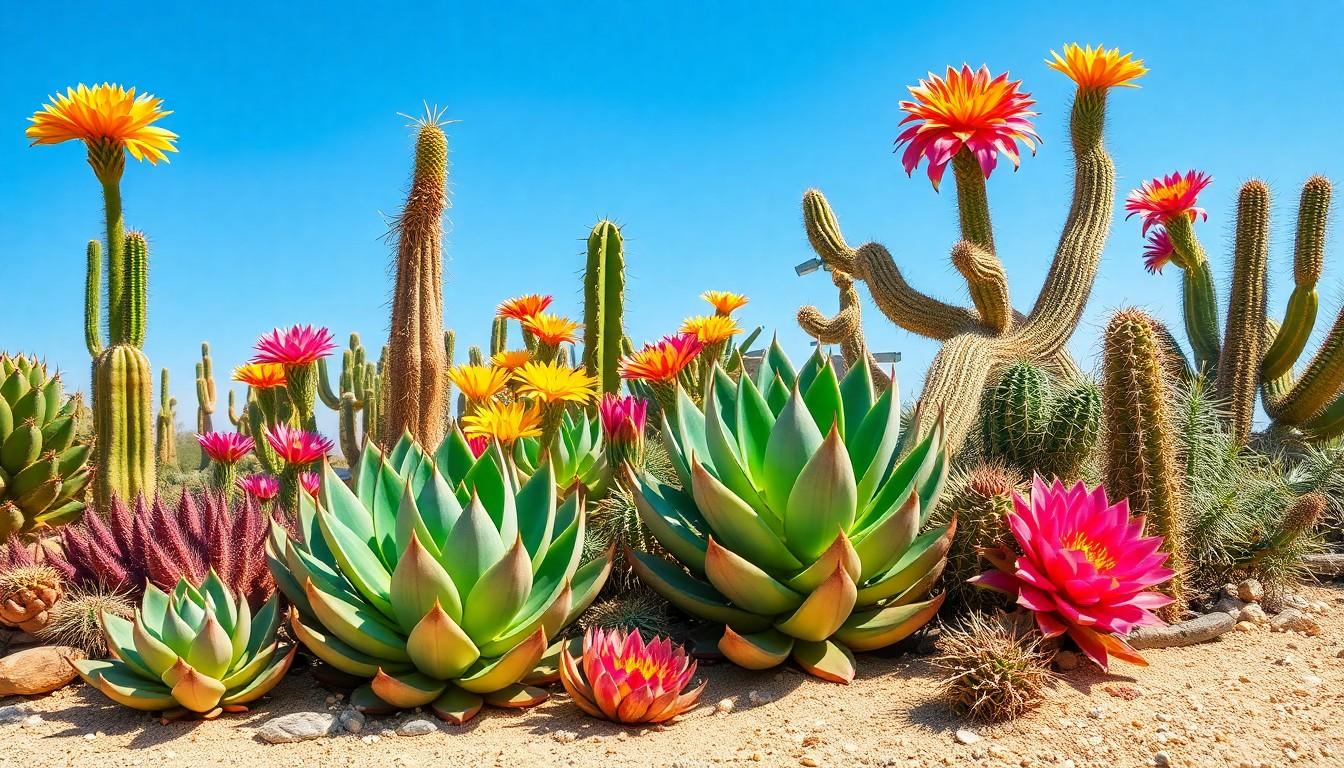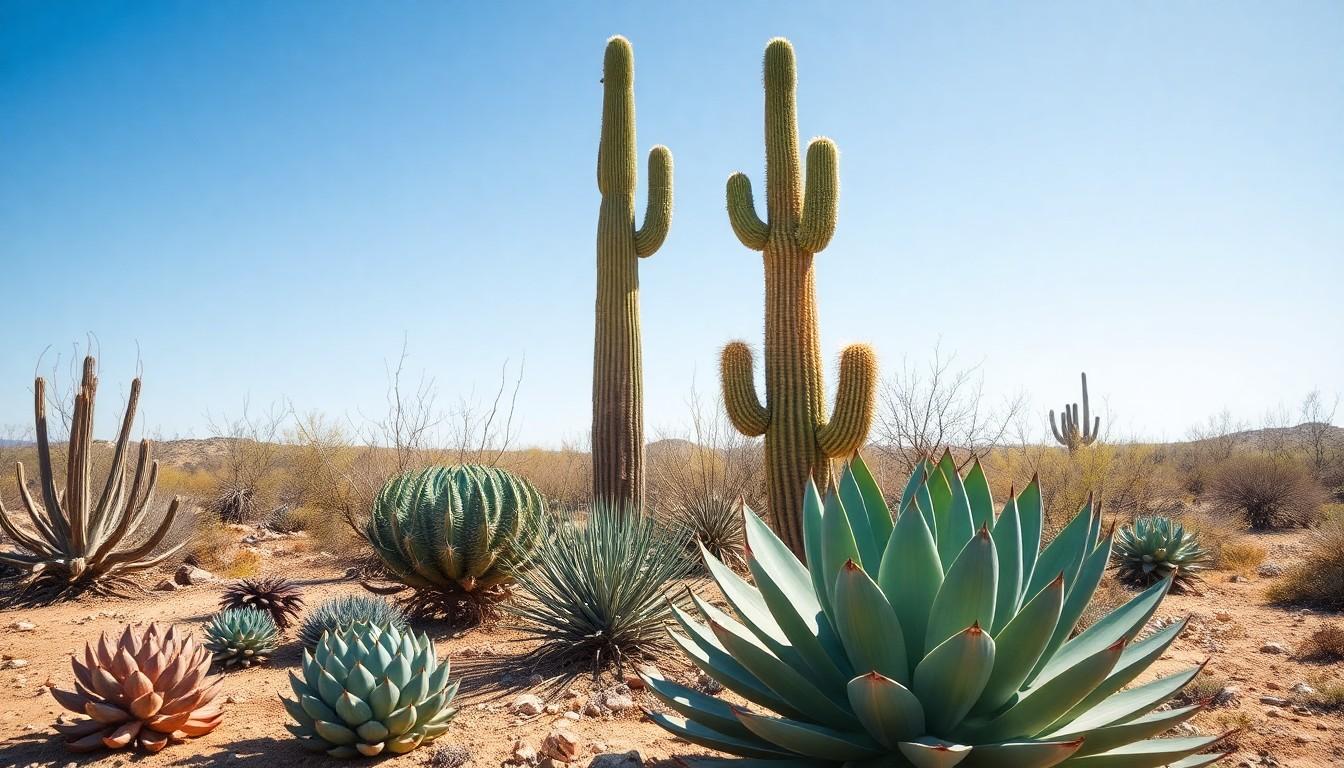The Best Fluffy Pancakes recipe you will fall in love with. Full of tips and tricks to help you make the best pancakes.

Desert Succulents: Transform Your Space with Stunning, Low-Maintenance Beauty
In a world where watering plants feels like a full-time job, desert succulents are the delightful rebels of the plant kingdom. These hardy little wonders thrive in arid conditions, proving that sometimes less really is more. With their quirky shapes and vibrant colors, they not only survive but also add a splash of personality to any space.
Overview of Desert Succulents
Desert succulents adapt to arid climates, displaying remarkable resilience. They store moisture in their leaves, stems, and roots, allowing survival during extended periods of drought. Various species, such as agave and cactus, showcase diverse shapes and striking colors, enhancing landscape design and interior decor.
The morphology of these plants often features thick, fleshy leaves and unique structural forms. Adaptations like waxy coatings minimize water loss, while specialized root systems maximize water absorption from occasional rainfall. This combination of traits enables desert succulents to flourish where other plants struggle.
Many desert succulents produce vibrant flowers, attracting pollinators like bees and hummingbirds. These reproductive strategies ensure plant survival in challenging conditions. Often, blooms emerge unexpectedly, adding bursts of color amidst the dry landscape.
Cultivating desert succulents requires minimal resources, making them advantageous for both novice and experienced gardeners. Proper placement in sunny locations enhances growth, as most species thrive in full sun exposure. These plants demand infrequent watering, making them ideal for those with busy lifestyles.
Enthusiasts frequently incorporate succulents into xeriscape gardens, promoting water conservation. Often, they pair these plants with native species to create ecologically balanced environments. Their adaptability also transcends outdoor settings, proving ideal for container gardening and indoor spaces.
Desert succulents embody beauty and practicality through their low-maintenance requirements and unique aesthetics. Their ability to thrive in harsh climates positions them as popular choices among plant lovers and landscape designers alike.
Types of Desert Succulents

Desert succulents include various species, each uniquely adapted to arid environments.
Cacti
Cacti are perhaps the most recognized desert succulents. They feature diverse shapes, sizes, and colors, making them popular in landscaping. Varieties like the Saguaro and Barrel Cactus thrive in extreme heat. Many cacti possess spines that provide protection against herbivores while minimizing water loss through transpiration. Certain types bloom spectacularly, with flowers attracting pollinators such as bees and birds. Proper placement in sunny areas ensures optimal growth, as these plants typically require full sun.
Agave
Agave plants showcase striking, rosette forms. Known for their thick, fleshy leaves, many species develop sharp spines along leaf edges. These succulents store considerable moisture, allowing survival through extended droughts. Some agave varieties like Agave americana even produce tall flower spikes, offering a stunning visual display. Cultivation usually involves minimal watering and a preference for sandy, well-draining soil. This adaptability makes agave an excellent option for xeriscaping.
Aloe
Aloe species are known for their healing properties, particularly Aloe vera. Leaves contain a soothing gel widely used in skin care and medicinal applications. Many aloes thrive in direct sunlight and perform well in containers, facilitating indoor gardening. Succulents like the Aloe polyphylla display captivating spiral formations, contributing to their decorative appeal. These plants require infrequent watering, making them ideal for busy plant enthusiasts. Their vibrant flowers, which bloom in a range of hues, attract various pollinators, promoting biodiversity in gardens.
Growing Conditions for Desert Succulents
Desert succulents thrive in specific growing conditions that support their survival in arid environments. Focus on adapting the environment to meet their needs.
Soil Requirements
Soil for desert succulents must provide excellent drainage. A sandy or gritty soil mix works best, often combining potting soil with perlite or coarse sand. This combination prevents water retention, reducing the risk of root rot. Many gardeners find that using cactus mix can also provide suitable conditions. Consistency in soil texture and composition supports healthy root development. Nutrient levels should remain modest, as overly rich soil can hinder growth and promote unwanted fungal diseases.
Watering Needs
Watering desert succulents requires a strategic approach. These plants prefer infrequent, deep waterings that mimic natural rainfall. Allow the top inch of the soil to dry completely between waterings. Overwatering poses a significant risk, leading to root issues and foliage decline. Depending on the climate, a typical schedule might involve watering every two to four weeks during the growing season. Adjustments can happen in cooler months when these plants enter dormancy. Understanding individual plant needs ensures thriving desert succulents throughout the year.
Benefits of Desert Succulents
Desert succulents offer numerous advantages, making them ideal for various environments. Their adaptability and low-maintenance nature contribute significantly to their popularity.
Aesthetic Appeal
Vibrant colors and unique shapes characterize desert succulents, adding visual interest to any space. Varieties like cacti and agave come in diverse forms, enhancing landscape designs. Many species bloom brightly, attracting attention and admiration. Interior decor benefits from these plants, as they provide striking focal points. Additionally, their ability to thrive in minimal light conditions expands design possibilities, allowing placement in various locations.
Drought Resistance
Remarkable drought resistance sets desert succulents apart, ensuring survival in arid conditions. These plants store moisture within their leaves, stems, and roots, enabling them to endure long periods without water. Specialized root systems efficiently absorb available moisture, optimizing water use. Infrequent watering aligns with their natural habitat, making cultivation simple for beginners and seasoned gardeners alike. When placed in sunny locations, these resilient plants flourish, showcasing their stunning forms while requiring little maintenance.
Conclusion
Desert succulents stand out as a perfect blend of beauty and resilience. Their ability to thrive in harsh conditions while requiring minimal care makes them a favorite among plant enthusiasts. With their vibrant colors and unique shapes they can transform any space into a stunning oasis.
These plants not only enhance aesthetic appeal but also contribute to sustainable gardening practices. By choosing desert succulents gardeners can enjoy a low-maintenance yet visually striking addition to their homes and landscapes. Their adaptability and drought resistance further solidify their status as an essential choice for both novice and experienced gardeners. Embracing desert succulents is a step towards a more vibrant and sustainable environment.
